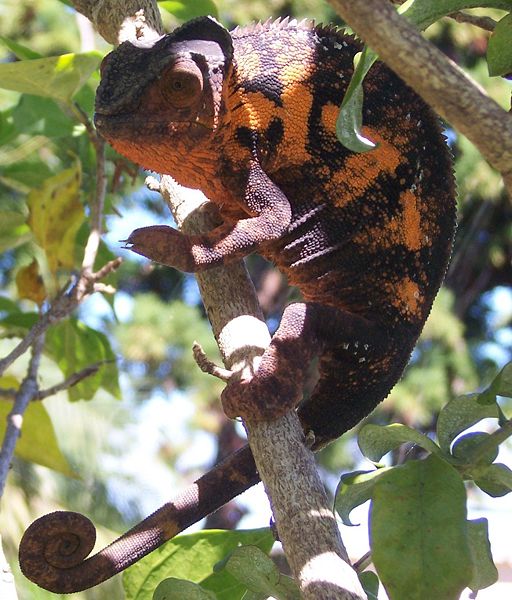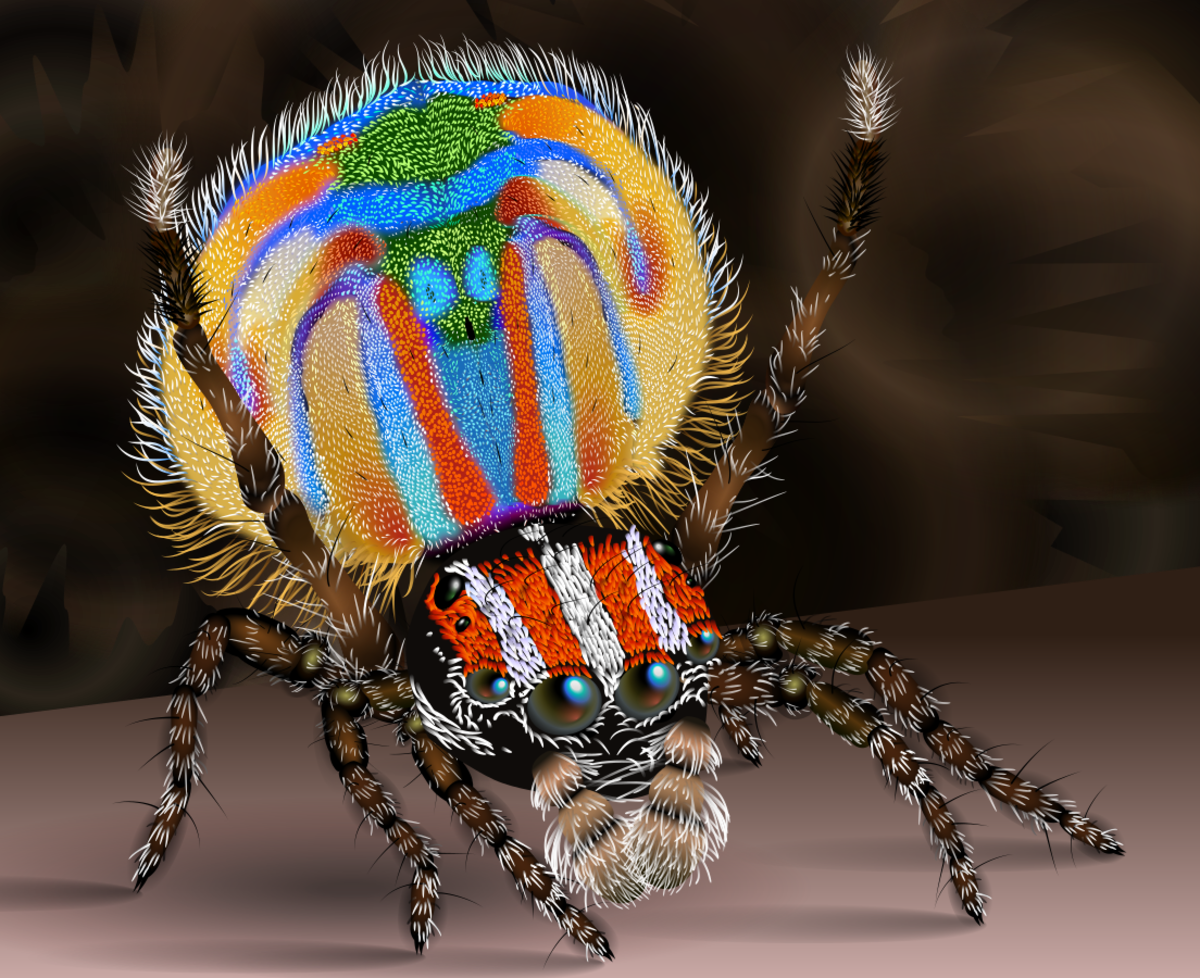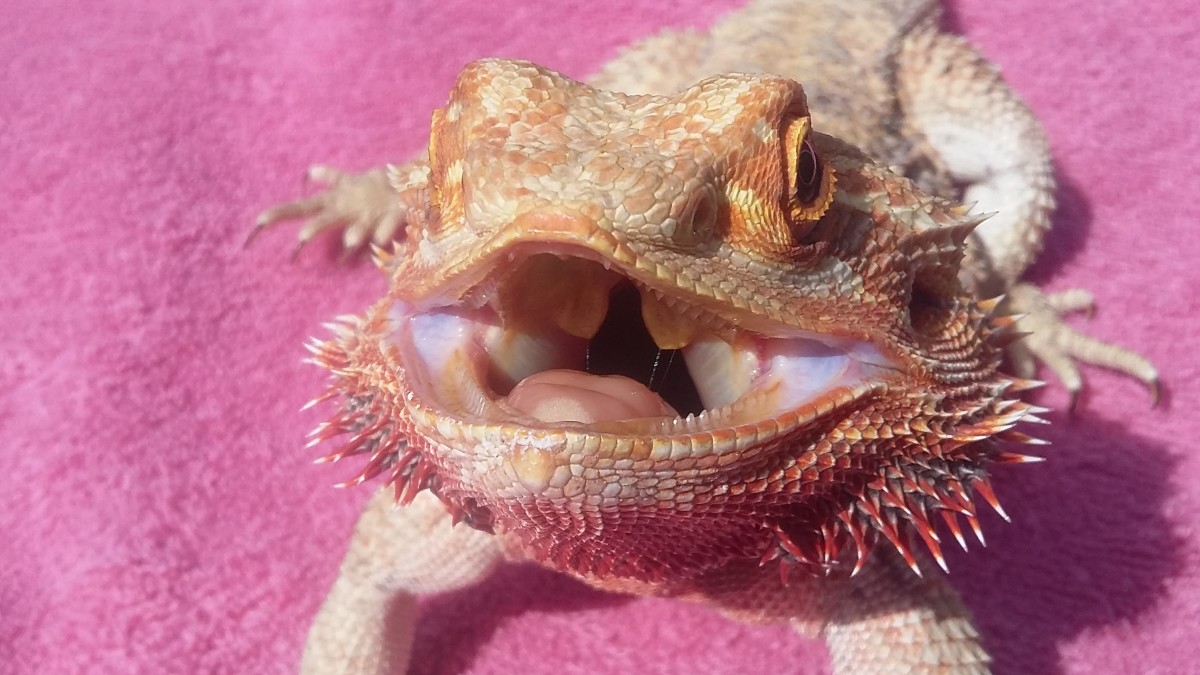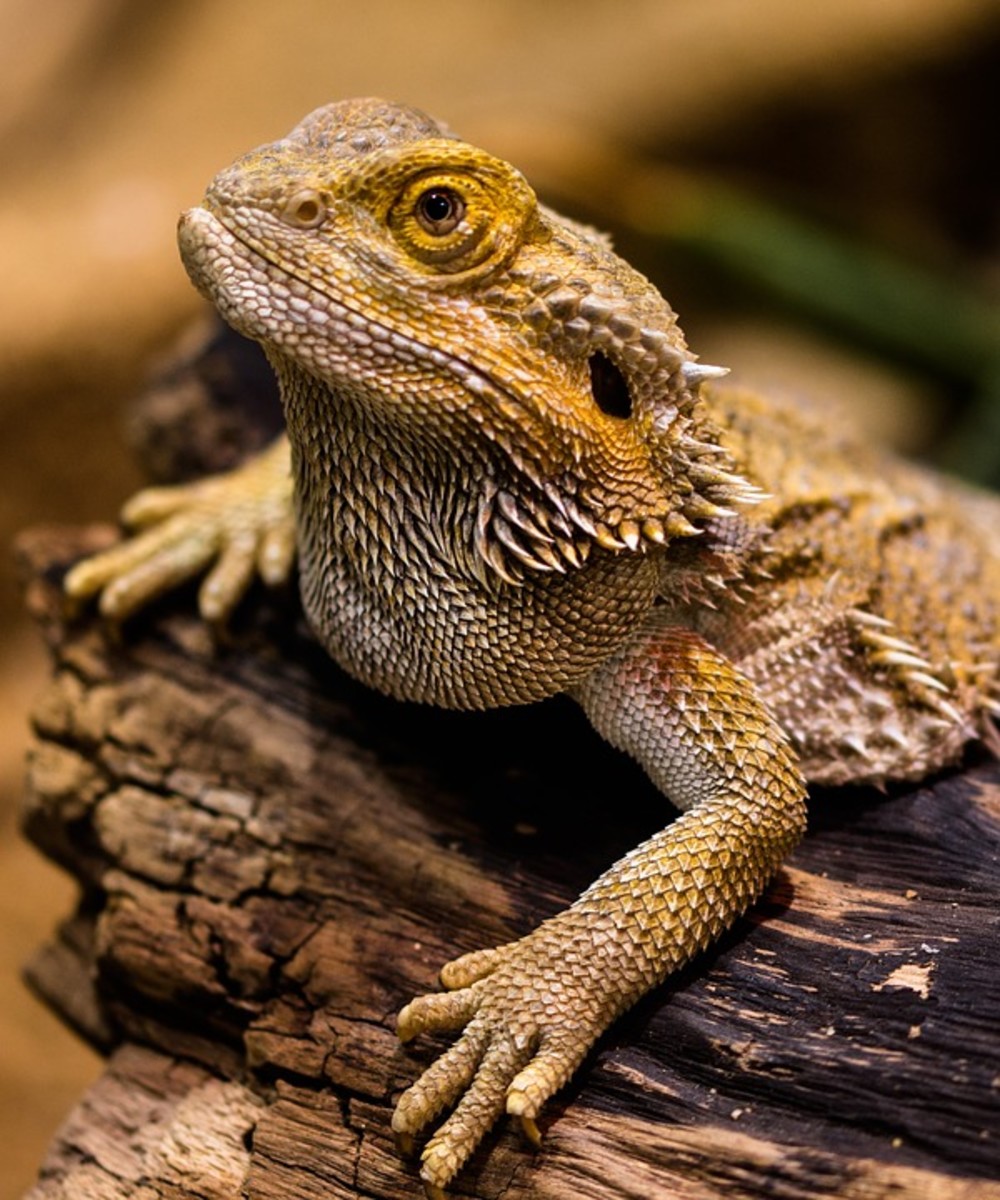Panther Chameleon Care Sheet, Photos Of Panther Chameleons And Other Information About Them.
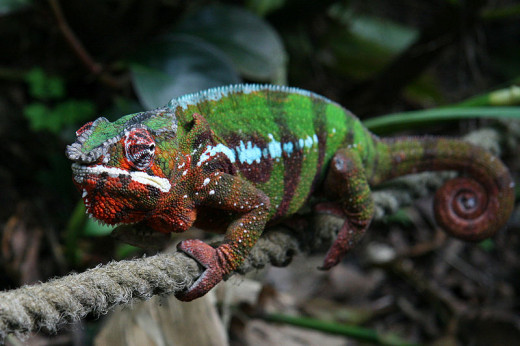
All About Panther Chameleons
In the wild Panther Chameleons which are a species of chameleon are found in the eastern and northern parts of Madagascar. French naturalist Georges Cuvier is credited with discovering the chameleon in 1829.
Males Are Much Larger Than Females
Male Panther Chameleons can grow to be up to 20 inches in length but they are typically 14 to 17 inches in length. You'll find that females will be about half the size of males and the males are much more brightly colored than females. Females usually stay brown or tan but you'll see hints of peach, pink, and bright orange on the females.
When Panther Chameleons are kept as pets they are kept in a terrarium and they are fed mostly on crickets but they will also eat wax worms, meal worms and roaches. Various morphs of colors have been bred in captivity.
Most people believe that chameleons that all chameleons can change their color to match their background but this isn't really so. Chameleons changing color is for the most part sub conscious. Their color and color change is effected by their mood, the light around them and the temperature of the air. If their particular species doesn't have the color orange with in their range of colors then they can never change to the color orange.
Panther Chameleons Are Territorial
You should know that like almost all chameleons Panther Chameleons are territorial. Apart from mating time it will spend most of its life by its self. When two Panther Chameleons find themselves together they will inflate and blow themselves up and change color to try to scare the other male off so they can have access to any females in the area. Only rarely will there be an actual fight between the males because one of the males will usually get scared off by the other male and back down.
What Females Do When They Are Gravid Or Carrying Eggs
Female Panther Chameleons will often turn black or dark brown with orange stripes to let males know they have no interest in breeding. Females usually only live for two to three years after they lay their first eggs because of the stress laying eggs puts on their bodies. Females will usually lay 10 - 40 eggs per time depending on how good their nutrition is in their particular area. Their eggs usually hatch in 240 days.
Panther Chameleons Have Very Long Tongues
I think it's a Chameleons have a tongue that's often as long or longer than their bodies. Once the tip of that tongue strikes its prey the sticky end of the tongue will stick to the prey and the tongue will be drawn back into the chameleons mouth where it will be quickly crushed by the chameleons powerful jaws and quickly consumed.
You might also find it interesting that their eyes can operate independently from each other. They have very keen eyesight for a reptile and they can see their prey further out from them than other reptiles.
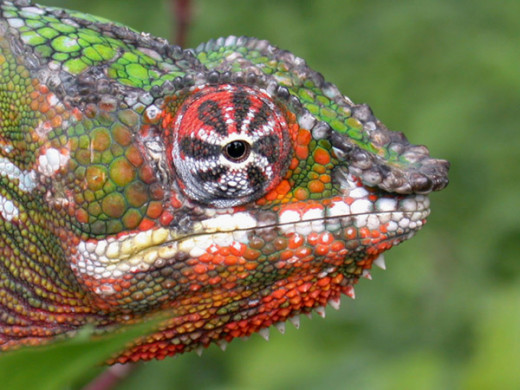
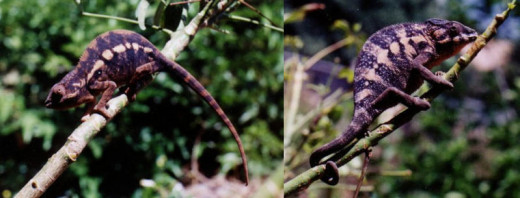
Please Vote In Our Poll.
Have You Ever Seen A Panther Chameleon Up Close Before?
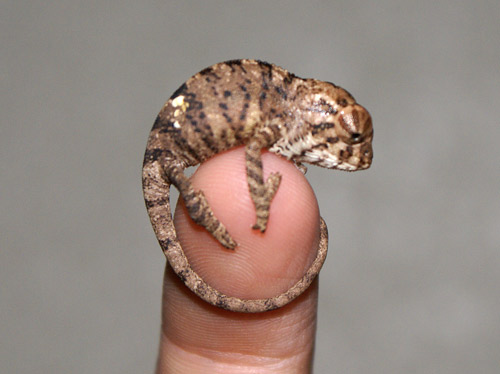
Panther Chameleon Care Sheet
Panther Chameleons are one of the most colorful species of any chameleon currently available in the pet trade. They are native to Madagascar and they are able to turn a wide variety of colors. They are able to match most colors they find themselves on but not all.
You can use Google to find Panther Chameleons for sale. Be sure to shop on line only from well established long term breeders. You can also find them for sale at reptile shows, pet shops and reptile shops. And you should know that depending on their size and color the asking price for them can vary widely. Shop around for the best price unless you are looking for a rare morph color that you particularly want. Then you may have to pay a good bit more.
Females of the species are typically 10 - 14 inches and males are often quite a bit bigger at 12 - 18 inches. Its not unusual to find males though up to 21 inches long. A healthy well kept female will weigh from 60 - 100 grams and a male will weigh from 140 - 180 grams. You want specimens that have clear eyes with no discharge from the eyes or nostrils. There should also be no damage from fighting. All of its toes should be there and there should be no tumors or unusual swelling unless a female is gravid. Juvenile specimens will of course be smaller.
Under ideal conditions with really great care you can expect your Panther Chameleon to live for five to seven years.
Make It Easier For Baby Panther Chameleons To Find Their Prey
Start off by keeping your juvenile Panther Chameleon in a smaller cage so that its prey is easier for it to catch. Then as it grows into an adult put it into a larger cage or enclosure.
You'll want to decorate the cage with various safe live plants, vines , and branches and sticks for it to climb and play on. In time you'll discover that your chameleon will love to climb and it will love having various live plants to hide in and ambush its prey from. Screen enclosures are the best enclosures for Panther Chameleons because they need fresh air on a regular basis but you don't want to put them in a drafty place and you don't want to put them in a area with full sun. They can develop a respiratory infection if they are kept in air that is stagnant. When you first get your Panther Chameleon you should look for a veterinarian in your area that treats pets like your Panther Chameleon. Don't wait until you need a vet to try to find one.
Lighting Needs For Your Panther Chameleon
You need to provide your Panther Chameleon with two types of lights. One needs to be a UVB bulb and the other needs to be an incandescent bulb. Adult Panther Chameleons need a basking spot of around 100 degrees and juveniles need a basking spot of 85 - 90 degrees. You need to place the lights towards the top of the cage or enclosure. Their home needs to stay about 75 degrees all the time.
Substrate Needs For Your Panther Chameleon
I leave the floors bare with no substrate. Their really is no need for substrate as your Panther Chameleon will be spending most of its time climbing and setting on its branches and sticks. You can use shredded newspaper but there is really no need for it.
The Diet For Your Panther Chameleon
Crickets will be the main diet for your Panther Chameleon but you can also offer them wax worms, roaches, and meal worms. You should dust their food with vitamin powders. Use calcium three days a week, calcium with D3 once a week and a dusting of Miner All a couple of days a week. You should dust the food with Herptavite once every other week. You can buy all of these vitamins at most large pet shops or over the internet.
Water For Your Panther Chameleon
Fresh water is very important for your Panther Chameleon. They love to drink water and you need two water dishes in most enclosures. One near the top of the cage and one near the bottom. Make sure to use bottled water only and change it very often. You can mist the cage with water about three times a day to keep the humidity up around 60 - 70 percent. I suggest installing a waterfall or drip system and running it all the time to help keep the humidity perfect and to help keep your Panther Chameleon healthy.
Panther Chameleons Are Usually Fairly Docile
You can occasionally get a grumpy chameleon but this is rare. Chameleons like to be left alone. They are not going to ride around on your shoulder or ride around in your pocket. They are kept to look at an enjoy. No you don't want to pet and rub it. Your hand coming from above can be considered as an attack.
Thanks For Reading My Hub Page On Panther Chameleons
I appreciate you being here and reading my Hub Page on Panther Chameleons. If you have tips, suggestions, or comments feel free to post them below. I hope you have found the information here helpful and I hope you have a nice day. Thanks for reading. It is appreciated.
